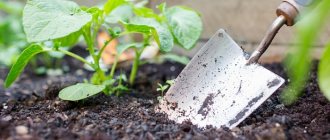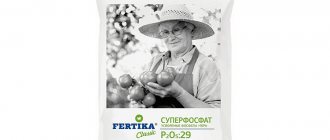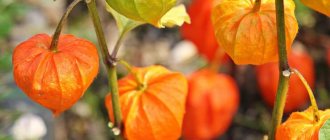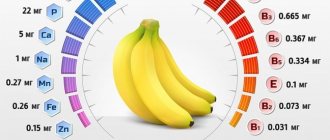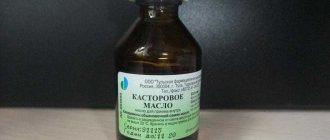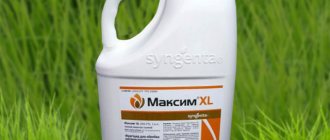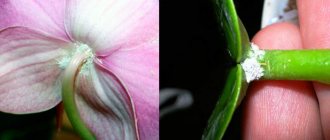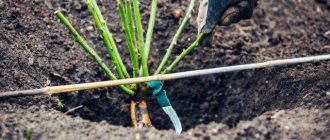The main dream of all gardeners is to get a big harvest. It is necessary to strive for its implementation in early spring, when all the preparatory gardening work is just beginning to be carried out. Fertilizers and fertilizing are the same irreplaceable means that not only strengthen and saturate seedlings with all useful substances, but also increase their productivity. Their use is a necessary and mandatory measure, since the amount of harvest at the end of the season depends on them. Vermicompost is the best option for feeding planting material. It consists only of natural ingredients and does not cause any harm to the environment or to people who will consume the grown vegetables, fruits or berries. But before using it for its intended purpose, you must read the instructions from the manufacturers. This article provides all the detailed information about liquid vermicompost, its composition and features of application in practice.
Composition of liquid vermicompost
Vermicompost is a liquid substance that contains the full composition of vermicompost (nutritive fertilizer that is formed as a result of the processing of organic waste by earthworms). Vermicompost contains a large number of useful substances that promote the active growth and development of all garden crops:
- humates;
- various micro- and macroelements;
- complex of vitamins;
- fulvic acids;
Vermicompost contains all the substances necessary for plant development
- amino acids;
- phytohormones (natural origin);
- spores of microorganisms living in the soil;
- strains of nitrogen-fixing bacteria.
Ribav-extra
Ribav-extra is a Russian preparation for root formation in young plants and increasing the likelihood of seed germination. A non-toxic stimulant based on biological substances, it is widely used for rooting orchids.
It combines well and interacts with various fertilizers. Ribav-extra contains :
- L-alanine;
- Glutamic acid;
- Amino acid mixture;
- And squirrels.
The solution is used for orchids with a weak root system and in its absence.
Rooting solution : 2 drops of the drug per 500 ml of water. You can revive an orchid by immersing the tip of the stem in the solution for 30-60 minutes. In addition to immersion, you can use watering, since the drug is a growth stimulator not only of roots, but also of shoots.
The effectiveness of the drug is 99%. It is useless only in cases where the core of the orchid has begun to rot, which naturally is not visible to the naked eye . The first result after using the solution will be visible after 2-5 weeks.
Reviews
Olga. “Treatment with Ribaf works really well, improving the condition of orchids on the face.”
Customers leave a lot of good reviews about Ribav-extra.
Oksana. “I read about Ribav fertilizer on one of the forums and decided to try it. I diluted it in a proportion of 5 drops per glass and dropped in the orchid babies. After a couple of days, the roots darkened and the leaves began to dry out. Apparently the proportions were advised incorrectly. I haven’t tried it again."
Properties of matter
The beneficial substances of vermicompost promote the active growth and development of plants, improve all metabolic processes and photosynthesis, thereby increasing productivity. The liquid concentrate, in addition to the above properties, also has a bactericidal effect on planting material (this occurs due to the inclusion of all components from the tissues of the worm, as well as antibiotics from microorganisms that lived in its intestines). It helps to strengthen the immunity of seedlings to various diseases, thereby reducing the possibility of its death.
Precautionary measures
The use of liquid vermicompost does not require any special precautions, since the substance is not toxic.
To prevent the fertilizer from getting into the stomach or mucous membranes, or from penetrating microcracks into the skin, it is enough to wear rubber gloves before work, and after finishing work, wash your hands well with soap.
The liquid is packaged in polyethylene bottles, which are completely safe from the point of view of fire regulations.
Important! If drops of fertilizer do get into the eyes or onto the skin, it is necessary to rinse them well with plenty of running water, and if swallowed, perform a gastric lavage with a weak solution of potassium permanganate.
Features of the fertilizer
Vermicompost has a number of features characteristic of this particular fertilizer. He is capable of:
- stimulate the growth and development of the root system;
- accelerate the germination of the planted seed;
- strengthen the immunity of seedlings to various diseases;
Vermicompost can be used for both garden and indoor plants
- protect the plant from the penetration of heavy metals and radionuclides;
- activate flowering;
- improve productivity;
- reduce the level of nitrates in fruits.
Application
The use of fertilizer improves the taste of tomatoes and the skin becomes stronger. Such fruits are well transported and show excellent keeping quality.
Soaking seeds:
- For 1 liter of water take 5-10 ml of concentrate;
- seeds are bred and processed.
Caring for seedlings with the help of vermicompost turns into a pleasure, the bushes grow stronger and acquire a powerful root system. How to do it:
- 1 liter of the prepared solution is poured onto 1 m2 of soil;
- Foliar spraying is carried out 2-3 times.
Root watering for adult tomatoes is required at least every 2 weeks. For 1 m2 it takes up to 2-3 liters of the finished solution. Under 1 bush pour 0.5-0.6 liters of the prepared product. During the season, the same number of applications is carried out as watering.
Root feeding is used with each watering.
Irrigation is useful once every 10 days. In total, you will need to carry out the procedure 3-4 times per season.
Agricultural experts recommend alternating root and foliar feeding. This will improve plant productivity and growth.
Instructions for using liquid vermicompost when planting garden crops
Liquid vermicompost, according to the instructions, can be used:
- For pre-sowing seed treatment.
- Before planting seedlings in the ground (to fertilize the soil and activate the growth of garden crops).
- For foliar fertilization and spraying of foliage parts of plants.
Pre-sowing treatment
Important! 500 ml of the finished concentrate is designed to process 1 kg of planting material (seed).
Experts recommend using an aqueous extract from vermicompost not only for feeding plants, but also for soaking the seed itself before planting. The active components of the substance promote early hatching of young sprouts, their rapid germination, acceleration of similarity and increased productivity in the future.
When using vermicompost, follow the dosage
Before soaking the seeds in vermicompost, the concentrated substance must be mixed with water (the recommended ratio of ingredients is 1:20). Soaking planting material has its own characteristics, since the seed of each plant species must be processed for a certain period of time (according to the instructions):
- legumes – no more than 6 hours;
- radish seeds and salad greens – no more than 12 hours;
- onions and potatoes are soaked 30-40 minutes before planting;
- seeds of vegetables and melons – 24 hours;
- parsley and dill - no more than 24 hours.
Using concentrate for seedlings
Liquid vermicompost is also used in the process of planting seedlings in the ground. The diluted concentrate is watered into the holes in which the young shoots will be planted. The components of the substance contribute to the rapid rooting of garden crops, their active growth and development.
Advice. It is recommended to dilute vermicompost with water (the ratio of components is 1:50) so as not to burn the young roots of the seedlings.
Foliar fertilizer and spraying of foliage parts of plants
In addition to treating seeds and feeding seedlings, the diluted concentrate is also used for spraying the foliage of plants and their foliar feeding. For these purposes, experts advise using vermicompost, but in the lowest concentration (the recommended ratio with water is 1:200).
Spraying and feeding must be carried out during the period when the plant is actively growing and developing, as well as during the formation of its fruits.
Foliar feeding
How to use vermicompost
This universal organic fertilizer can be used for seedlings, all flowers and any garden and vegetable crops. There is only one caveat to its use: it is still better to use it in open ground. Vermicompost in its pure form is not very suitable for indoor plants, since fertilized soil is an ideal place for midges to live and breed, which are quite difficult to get rid of in an apartment. If you really need to improve the soil in pots with indoor flowers, then vermicompost (preferably in liquid form) is added no more than once every two months.
Fertilizer is used at any time from spring to autumn. It is most convenient to apply vermicompost when digging the soil or add it to each hole when planting seedlings or seedlings of trees and shrubs in the soil.
In the garden and vegetable garden you can use dry (in granules) and liquid vermicompost. Granules of dry vermicompost are simply embedded in the soil, and a solution is prepared from a special concentrate of liquid vermicompost.
Liquid vermicompost is best suited for seedlings and indoor plants; it is used mainly from early spring to the end of June.
Use of dry vermicompost
As we have already noted, there is never too much vermicompost in the soil. But for good growth and nutrition of plants, you need to add no less than the minimum dosage. It is recommended to adhere to the following indicators:
| Fertilized crop | Application rate of dry vermicompost |
| Potato | 200 g per well |
| Strawberry | 150 g for each bush |
| Winter crops | 700 g per 1 sq.m mixed with the top layer of soil |
| Tomato | 100-200 g per well |
| Other vegetables and greens | 500 g per 1 sq.m mixed with the top layer of soil |
| Fruit trees | 5-10 kg for each seedling |
| Berry bushes | 1.5 kg per planting hole, thoroughly mixed with soil |
To feed trees, shrubs, vegetable crops and garden flowers during the growing season, add 0.5 kg of dry vermicompost per 1 sq.m, mix with the top layer of soil and water generously.
Reviews and recommendations
Gardeners who constantly use liquid vermicompost note:
- The water extract helps protect plants from diseases (especially those vegetables that grow in greenhouse conditions).
- Its use leads to an active reduction in the possibility of ascochyta blight, rot and powdery mildew.
- Improving the quality of grown vegetables, which is achieved through regular use of the substance.
- Improving the vitamin composition of grown products.
- Reducing the level of nitrates in vegetables, herbs and fruits.
Liquid vermicompost helps not only improve the productivity of planted plants, but also grow high-quality, tasty and healthy products!
Storage conditions and periods
How to store:
- vermicompost fertilizer packages with vermicompost are kept in a cool place, without exposure to sunlight;
- there should be no dampness in the room where the organic product is located, but ultraviolet radiation also negatively affects the quality of the liquid product and dry concentrate;
- it is important to maintain the integrity of the packaging, to ensure that mice, other rodents, and pests do not get to the packages;
- a dark room with good ventilation and moderate temperature is the best option for placing an organic product;
- even when exposed to low temperatures and subsequent defrosting, vermicompost retains its positive properties, but extreme conditions are undesirable.
When purchasing vermicompost, you need to check the expiration date. Natural fertilizer is used for 1.5 years after the date of packaging.
Vermicompost for plants: photo
Description
The most effective fertilizing is pure vermicompost without impurities. But obtaining it is costly and expensive, so savvy sellers, in pursuit of profit, offer for sale compost-peat mixtures with a small content of vermicompost. Here it’s the same as with soil - they put peat in a pack and it’s all over. In general, you need to choose carefully.
A good fertilizer based on vermicompost is 4-8 times higher in concentration of organic substances needed for plants than rotted compost and cow manure. At the same time, vermicompost does not contain helminth eggs, weed seeds, or pathogenic microorganisms.
By the way, some gardeners who have the opportunity to live in their own home all year round begin to breed Californian worms on their own, planting them in compost bins. It is important to ensure the correct level of humidity and temperature, especially in winter.
How to prepare fertilizer at home
Biohumus can be prepared at home. For this you need the worms themselves and compost. In the pit you need to put manure, straw, sawdust, all waste, fallen leaves, food waste, add 5 percent of sand, calculated from the total amount of compost.
After 10 days, add peat and lime to the compost, approximately 2 percent of the total mass. Then throw in a few red worms or ordinary rain worms. If they burrow deep, then the substrate is suitable for them. If not, then you need to try again in a few days.
From 700 to 1500 individuals per 1 square meter should be placed in the rotted substance. m. First, the worms will get used to the new conditions. This will take a month or two. Then they will begin to multiply and process the compost.
In order for them to have something to eat, new compost must be added every 5-10 days. After 4 or 5 months, you can collect the finished vermicompost. Before sampling the fertilizer, the inhabitants of the pit should take a break from feeding, that is, do not add new compost.

